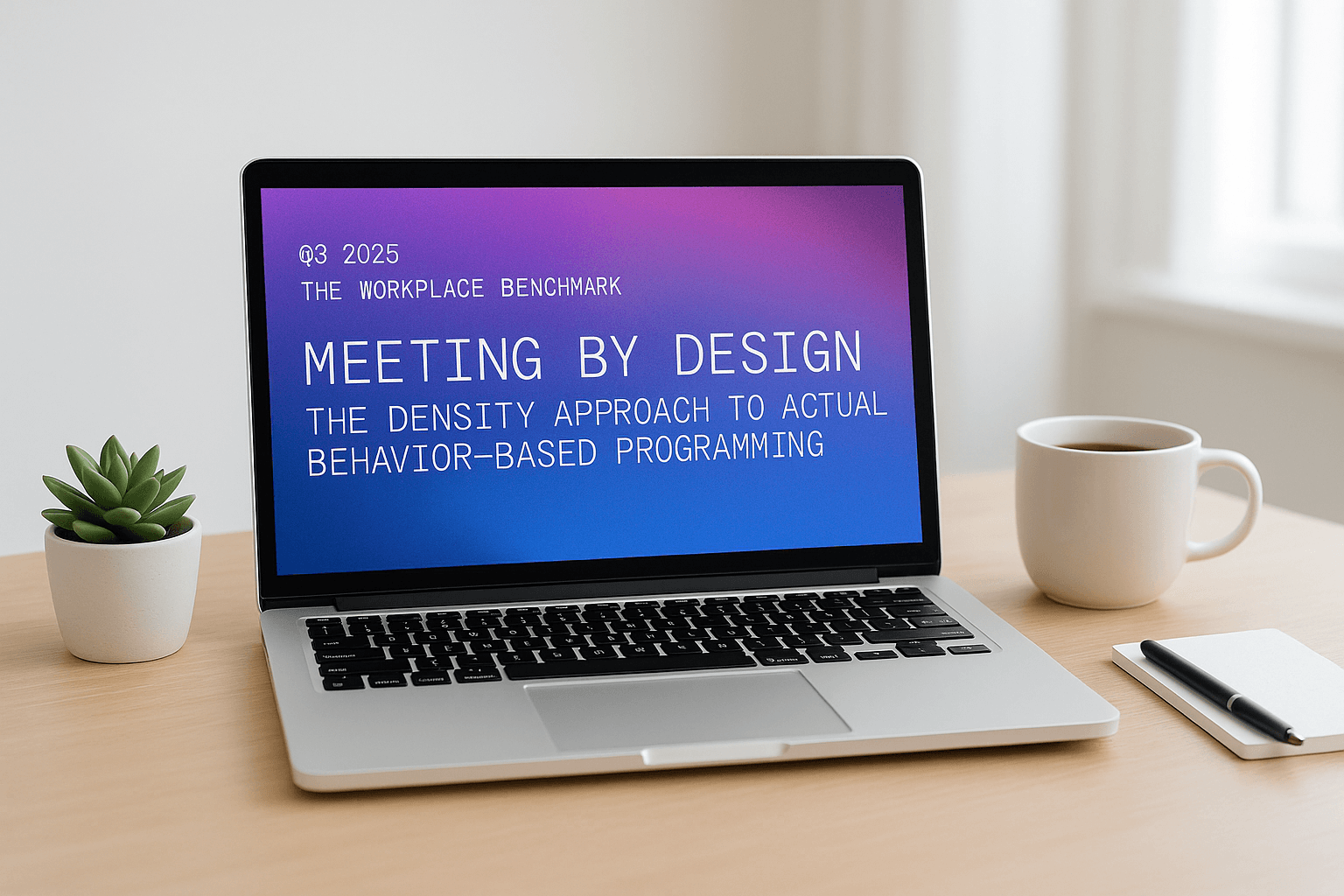Got ghost meetings? How to solve this costly workplace challenge
Ghost meetings block off meeting spaces that appear used in a company’s booking calendar but are actually empty.

A ghost meeting is a scheduled meeting where a conference room is booked, but no one attends. These no-show meetings block off meeting spaces that appear used in a company’s booking calendar but are actually empty.
This perceived utilization results in poor employee experience and wasted real estate. Reducing the frequency of ghost meetings ensures:
- Folks who need a meeting space have one
- You’re maximizing the ROI of every square foot of your workplace
But the first step to eliminating ghost meetings is to identify whether it’s a problem at your company.
How to know if you have a ghost meeting problem
No-show meetings happen. Someone forgets to cancel a meeting. Participants opt to Zoom from their desks for the benefit of remote colleagues.
These one-off events aren’t problematic. It’s when they reoccur with regularity that you should be concerned. But it can be challenging to identify a ghosting trend.
It’s not realistic or scalable to physically monitor every room that’s marked as booked in Google Calendar. And few companies make employees badge into meeting spaces, rendering badge swipes irrelevant.
That’s why companies, like one of our Fortune 500 customers, use Density insights to identify trends like ghost meetings.
Our customer installed Density sensors in two locations (Atlanta and Chicago), including at each meeting room. Our platform, Atlas, then converts that data into actionable insights.
Atlas insights combined with Google Calendar bookings showed our customer that more than 25% of all meetings booked (783) across their two locations were ghosted.

These insights gave the workplace team clarity and certainty that, yes, there is a misuse of meeting rooms, and something should be done about it.
But what?
How to eliminate your ghost meeting problem
Technology
Technology is one of the most effective and cost-efficient ways to eliminate ghost meetings.
Tools that have a room release feature, for example, can mark a room as available in your booking calendar if it doesn’t meet a specific threshold. With Google Calendar, for example, you can automatically release booked meeting rooms when all but one person declines the meeting in Google Calendar.
Display tools that show the occupancy of rooms in a workplace, such as Live Wayfinding, can make it easier for employees to find available spaces on demand.
Design a more balanced space-type mix
One reason for no-show meetings might be employees determine they don’t need a dedicated large space. Employee surveys and utilization data can help you determine this.
If that is the case, consider:
- Adding phone booths (1-2 person capacity). These spaces have proven useful not only for heads-down work, but for added privacy during Zoom calls
- Using hackable furniture and walls that make it easy to break large conference rooms into more intimate and useful meeting areas
Key Takeaways

DisruptCRE founder shares how corporate real estate is changing
Companies are moving employees from underutilized offices into "space as a service” options with utilization data.
Watch now
Half of offices are empty but you still can’t find a meeting room
Employees waste up to 30 minutes a day looking for a meeting room to meet in workplaces.
Read moreMost recent

Meeting space playbook: programming ratios that really work
Forget static formulas. This new research-driven playbook shows how to use real behavior to right-size your office for today’s meetings.

Space waste: The industry’s naughty and nice list
Our sensors spilled the beans: What industry is winning, who's wasting and who's hogging your office real estate.
.png)
Improve your occupancy sensor RFP with our best practice guide
Discover essential questions to simplify your occupancy sensor RFP process and confidently choose the right vendor.
.png)
Room raiders: The office upsizing epidemic
Tiny teams hogging big rooms leave large groups stranded—welcome to the new war for meeting space!
Explore other Density Products
Atlas for Workplace
Insights for the workplace that help you cut costs and deliver better spaces.
Learn more